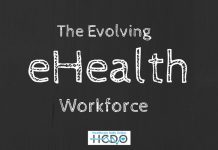 The American College of Nurse-Midwives (ACNM) released a statement praising the findings of the June 2013 report to Congress by the Medicaid and CHIP Payment and Access Commission (MACPAC). The Commission found that, while barriers to practice remain for nurse-midwives, members of the midwife profession stand poised to fill the healthcare gap created by both a lack of obstetrical options and an increase in American babies born to mothers receiving Medicaid.
The American College of Nurse-Midwives (ACNM) released a statement praising the findings of the June 2013 report to Congress by the Medicaid and CHIP Payment and Access Commission (MACPAC). The Commission found that, while barriers to practice remain for nurse-midwives, members of the midwife profession stand poised to fill the healthcare gap created by both a lack of obstetrical options and an increase in American babies born to mothers receiving Medicaid.
Birthing Statistics
The MACPAC report cites a full 46% of U.S. births occur to qualified Medicaid recipients. The financial impact of these births on state and federal governments exceeds $11 billion annually. This, combined with a decline in the general availability of obstetrical services and providers, particularly in non metropolitan areas, has produced a high degree of inequitable access.
The report states that as recently as 2004, 50% of U.S. counties lacked a single direct care obstetrician/gynecologist, and a full 85% of U.S. counties fell below the national average for obstetrical care. In rural areas in the early part of the 21st century, a mere 20% of rural areas contained a hospital with dedicated obstetrical services.
Midwifery
While the number of family physicians and general practitioners delivering babies in underserved areas has decreased over time, the percentage of births attended by midwives has steadily increased. The MACPAC report identifies this increase as a clinically significant jump from one percent of total U.S. births attended by a midwife in 1975 to over eight percent in 2010.
According to ACNM President Ginger Breedlove, this trend represents a shift toward utilizing a traditional model for maternity care to stand in the gap created by the lack of available obstetrical specialists. Indeed, the modern nurse-midwife, as the coalescence of traditional midwifery and allopathic health care, may improve maternal and neonatal health outcomes while simultaneously lowering the financial burden created by Medicaid-funded births. This could increase access to maternal healthcare while lowering direct financial costs to the state and federal government.
Both the MACPAC report and ACNM acknowledge that significant barriers to practice remain for nurse-midwives. These include professional oversight of qualified midwives, access to hospital privileges and widely varying state-based scopes of practice. Nevertheless, the ACNM remains positive that this report and the general trend toward acceptance of nurse-midwifery may mean that better maternal health options and lower costs to tax payers may be a reality in the future.
[cf]skyword_tracking_tag[/cf]









